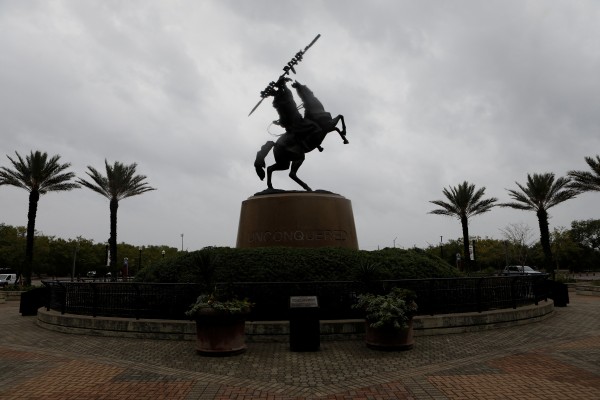Driving rain flooded roadways and closed down airports in Florida as an intensifying Hurricane Helene marched toward the state’s panhandle region, bringing the threat of a potentially deadly storm surge to much of the coastline.
The storm became a major Category 3 hurricane on Thursday afternoon with sustained winds near 120 mph (193 kph), the National Hurricane Center said, and was expected to continue gaining power.
Helene was forecast to make landfall in the evening in Florida’s Big Bend region, possibly as a Category 4 storm with sustained winds in excess of 130 mph (209 kph).
🚨#BREAKING: Helene is now a major Hurricane with winds of 120mph, and a pressure of 959mb; It is a cat 3 Hurricane now and still expected to gain strength.
The second video is from Florida in the last 30 minutes. pic.twitter.com/UsfJ9qdbxN
— World Source News 24/7 (@Worldsource24) September 26, 2024
Officials pleaded with residents in the path of the storm to heed mandatory evacuation orders or face life-threatening conditions. Helene’s surge – the wall of seawater pushed on land by hurricane-force winds – could rise to as much as 20 feet (6.1 meters) in some spots, as tall as a two-story house, the center’s director, Michael Brennan, said in a video briefing.
“A really unsurvivable scenario is going to play out” in the coastal area, Brennan said, with water capable of destroying buildings and carrying cars pushing inland.
The hurricane was about 160 miles (274 km) west-southwest of Tampa, Florida, as of 3 p.m. EDT, the center said.
Strong rain bands were whipping parts of coastal Florida, and rainfall had already lashed Georgia, South Carolina, central and western North Carolina and portions of Tennessee. Atlanta, hundreds of miles north of Florida’s Big Bend, was under a tropical storm warning.
In Pinellas County, which sits on a peninsula surrounded by Tampa Bay and the Gulf of Mexico, roads were already filling with water before noon. Officials warned the storm’s impact could be as severe as last year’s Hurricane Idalia, which flooded 1,500 homes in the low-lying coastal county.
Videos posted on the county’s social media site showed some swamped beachside roads and water rising over boat docks. Airports in Tampa, Tallahassee and St. Petersburg all suspended operations on Thursday.
Governor Ron DeSantis warned North Florida residents to flee before time ran out.
“You have time to get to a shelter, but you’ve got to do it now,” he said at a morning news briefing. “Every minute that goes by brings us closer to having conditions that are going to be simply too dangerous to navigate.”
Helene is expected to remain a full-fledged hurricane as it rolls through the Macon, Georgia, area on Friday, forecasters said. It could bring 12 inches (30.5 cm) of rain or more, potentially devastating the state’s cotton and pecan crops, which are in the middle of harvesting season.
“The current forecast for Hurricane Helene suggests this storm will impact every part of our state,” Georgia Governor Brian Kemp said.
After making landfall across the Florida coast, Helene is expected move more slowly over the Tennessee Valley on Friday and Saturday, the NHC said.
WALL OF WATER
Storm surge was forecast to reach 15 to 20 feet (4.6 to 6.1 meters) in the Big Bend area of Florida’s Panhandle region where the storm is expected to come ashore.
Numerous evacuations were ordered along Florida’s Gulf Coast, including Sarasota and Charlotte counties.
National Hurricane Center Deputy Director Jamie Rhome said about half of lives lost in hurricanes typically came from flash flooding caused by torrential rain, often among people who drive into flooded roads and are swept away.
Rhome added that the expected hurricane-force wind impact area stretched around 180 miles (290 km) north from the Florida panhandle to southern Georgia.
(REUTERS)
In a career spanning three decades and counting, Ramananda (Ram to his friends) has been the foreign editor of The Telegraph, Outlook Magazine and the New Indian Express. He helped set up rediff.com’s editorial operations in San Jose and New York, helmed sify.com, and was the founder editor of India.com.
His work has featured in national and international publications like the Al Jazeera Centre for Studies, Global Times and Ashahi Shimbun. But his one constant over all these years, he says, has been the attempt to understand rising India’s place in the world.
He can rustle up a mean salad, his oil-less pepper chicken is to die for, and all it takes is some beer and rhythm and blues to rock his soul.
Talk to him about foreign and strategic affairs, media, South Asia, China, and of course India.





